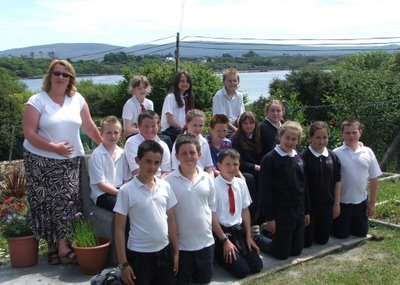 The picturesque little rural school of St. Theresa's in Cashel, Connemara has won many plaudits for its environmental activities in recent times.
The picturesque little rural school of St. Theresa's in Cashel, Connemara has won many plaudits for its environmental activities in recent times.Our projects in this area have been quite extensive:
- the implementation of a pro-recycling waste management system
- the creation of a vegetable and shrub garden
- the production of an enormous colourful mosaic in the school grounds out of discarded tiles
- the study of 'birds in our locality' as part of a countywide initiative organised jointly by the Galway Education Centre, Galway County Council and the Heritage Council of Ireland.
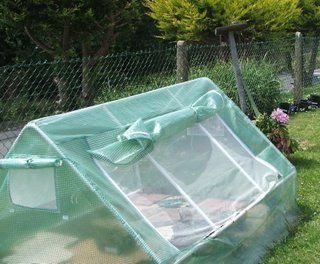 Marine Heritage of Cashel Bay: A Story Told in Mosaic
Marine Heritage of Cashel Bay: A Story Told in Mosaic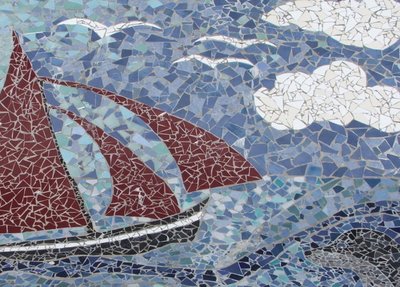 Part of the huge mosaic that covers our backyard. Painstakingly and lovingly put together by the pupils, this work of art portrays many of the traditional elements of Cashel Bay: the Galway Hooker sailing boat, the seal, the seagulls and tempestuous waves.
Part of the huge mosaic that covers our backyard. Painstakingly and lovingly put together by the pupils, this work of art portrays many of the traditional elements of Cashel Bay: the Galway Hooker sailing boat, the seal, the seagulls and tempestuous waves.The renowned artist and ecologist Gordon D'Arcy also came to our school. He took us on a guided walk and introduced us to all the wild life that lives in the woods, hedgerows and rockpools of Cashel. We were fascinated! When we got back to the classroom, he taught us how to draw what we saw on our tour. In particular, he showed us how to draw birds and took as an example the colourful 'pheasant'.
The first painting is one done by Gordon. He is very good! He asked us to copy it.
Birds on a Wire!
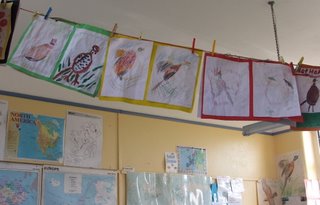
As you can see from the photograph, the pupils completed bird paintings were displayed like clothes on a washing line hanging from the ceiling of our classroom!
We are very proud of our works of art
Studying Bird Habitats
Next we looked in more detail at the different types of places, or habitats, that different species of birds live in. For instance, the Oystercatcher bird can be found along seashores where it can find its favourite type of food- oysters and other shellfish.
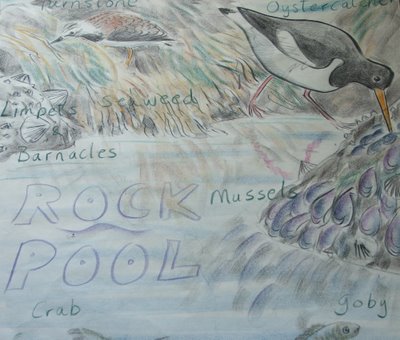 The rockpools along the coastline of Cashel have an amazing variety of wildlife includiing barnacles, limpets, oystercatchers, the goby fish and seaweed. You can see the Oystercatcher in our painting tucking into a meal of shellfish!
The rockpools along the coastline of Cashel have an amazing variety of wildlife includiing barnacles, limpets, oystercatchers, the goby fish and seaweed. You can see the Oystercatcher in our painting tucking into a meal of shellfish!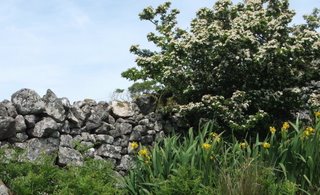
Unlike bare concrete walls and wire fences, dry stone walls provide living areas for all sorts of wildlife. For the large spaces between the stones can be home to small mammals as well as to plants and flowers.
For our project, we collected samples of abandoned birds nests that we found on grounds near our school. We would never touch a nest being used by birds
Most bird species build their nests in different shapes and styles often with different materials. For instance, the swallows build half-cupped shaped nests made of mud and located under rafters and eaves.
- Feeding Habits
- Length
- Colour
- Number of Eggs
- Habitat
- Folklore or some interesting facts
Blackbirds are a common sight in the Connemara countryside in November as they do not leave Ireland for warmer lands during the Irish winter.
We have chosen the Wren to represent the month of December as it is used on St. Stephen's Day by the Wren Boys.
OUR SCHOOL AQUARIUM
We have an aquarium in our school hall. There are crabs, sea anenomies, peri-winkles, mussels and seaweed.
We learned that crabs walk sideways. We like the way crabs walk. There is also seaweed in our aquarium and when the crabs get scared they hide behind the seaweed. It is really exciting.
We went to the seashore to collect them. The best places to look is under the seaweed and in the rock pools. There are about five crabs, one sea anemone and a large selection of shells. Our school is located literally just across from the shore – Cashel Bay. The first part of the shore is full of rocks; the second section is covered in seaweed.
CASHEL N.S. UPCOMING EVENTS
· RACE NIGHT -Tigh Feistí’s in aid of school funds.
Friday December 1st at 9.30p.m. All welcome!
· BOOK FAIR December 4-7th- Great ideas for Christmas gifts. 2.00-2.45 each day in Prefab.
· CHRISTMAS CONCERT Thursday 7th of December at 7.30p.m. in Cashel Community Centre- Fáilte roimh chách!
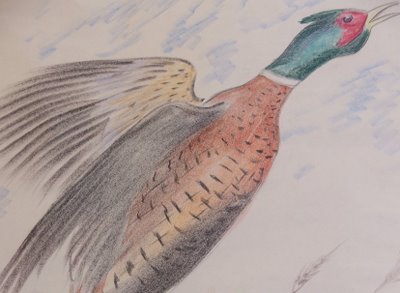
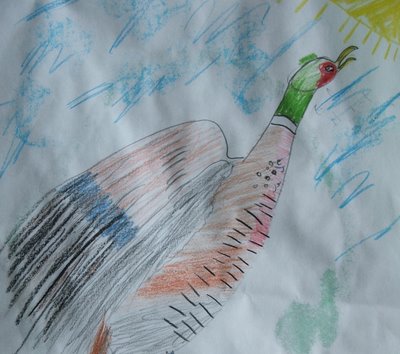
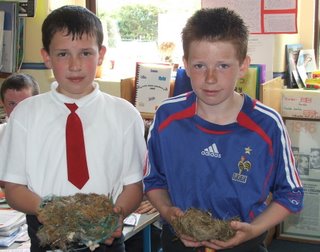
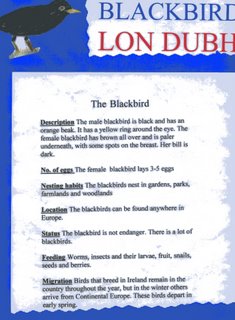
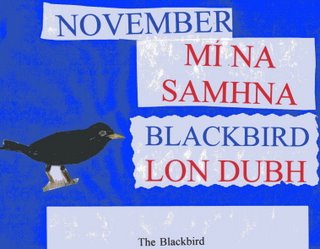
No comments:
Post a Comment